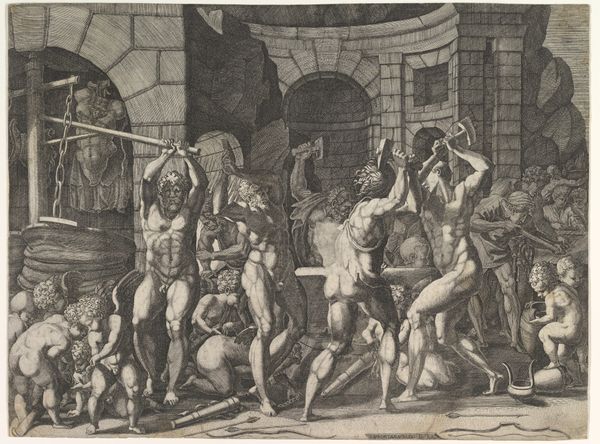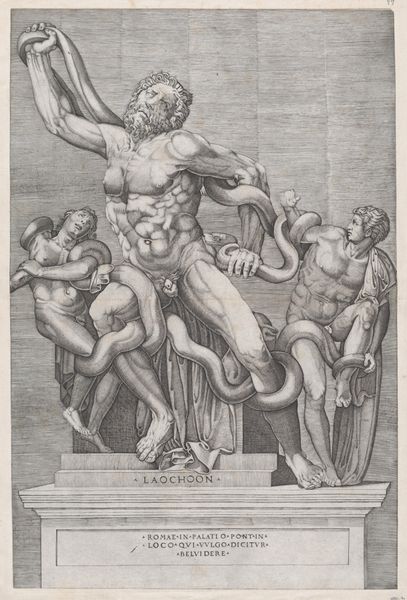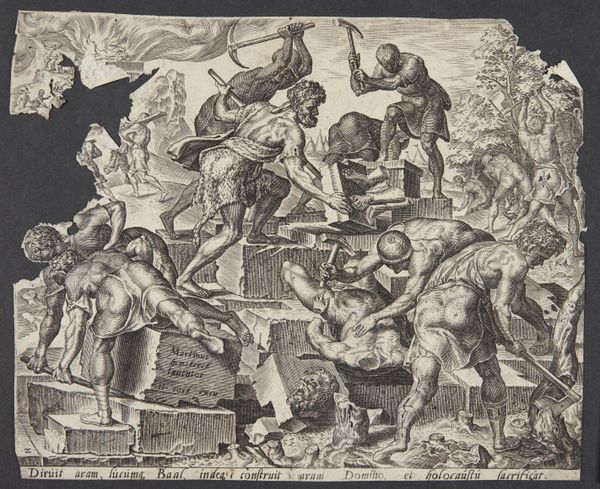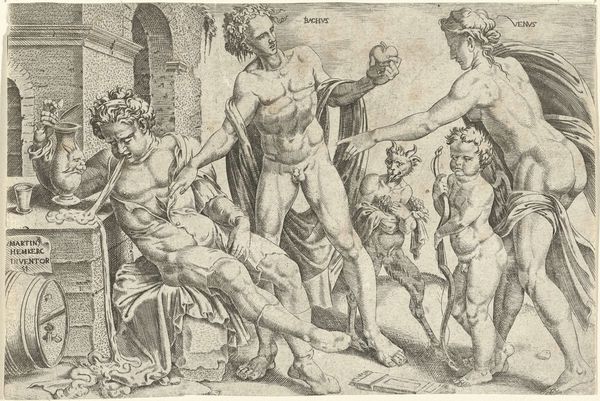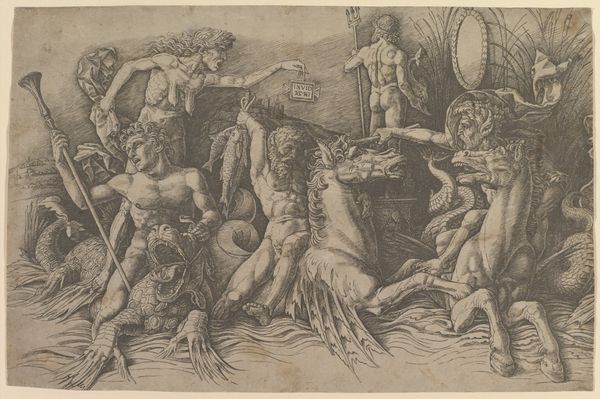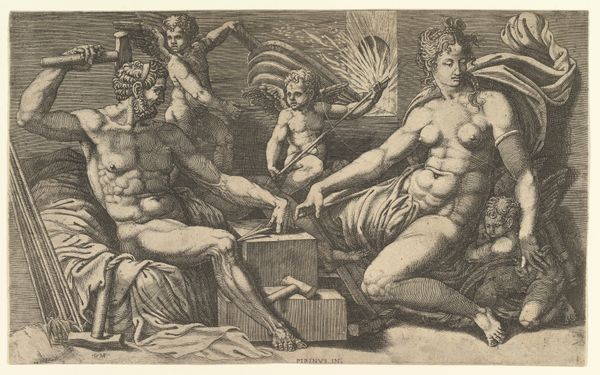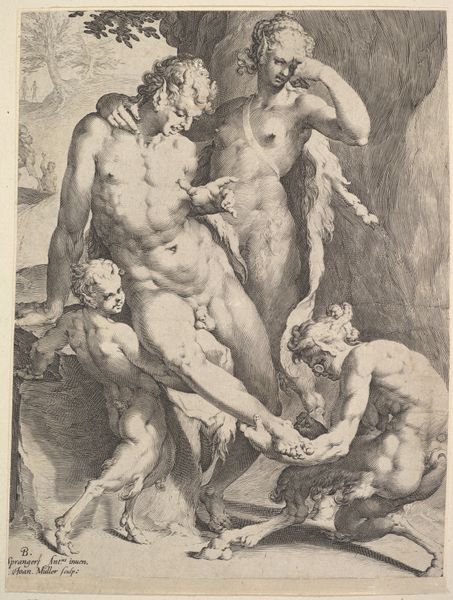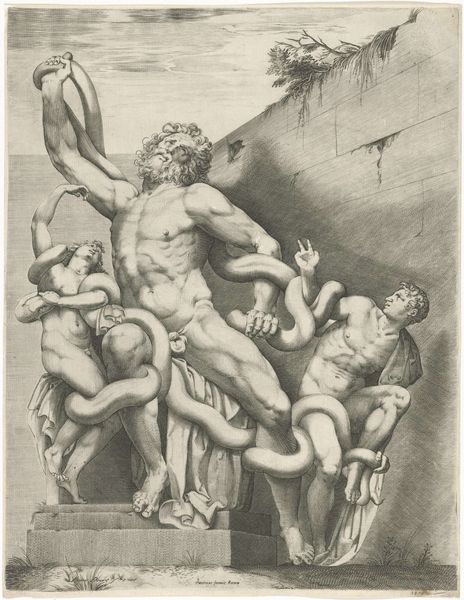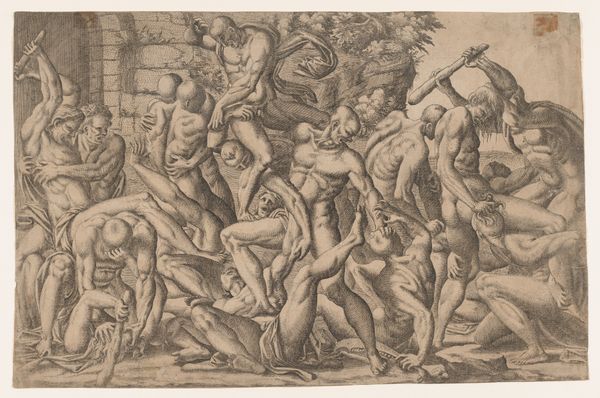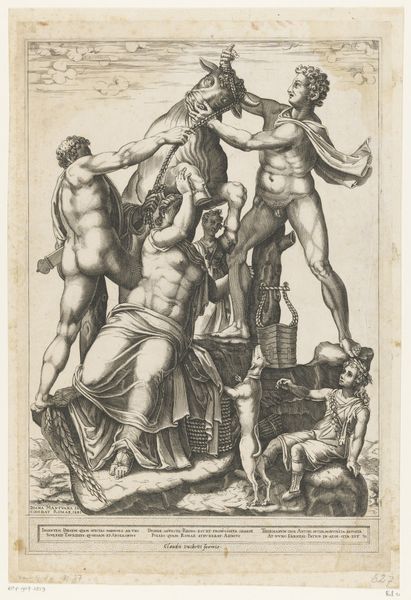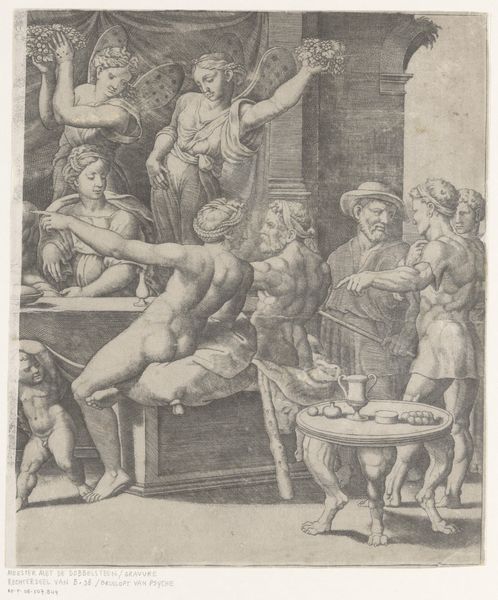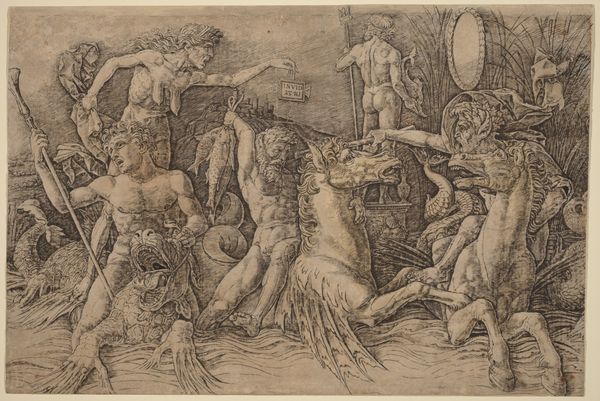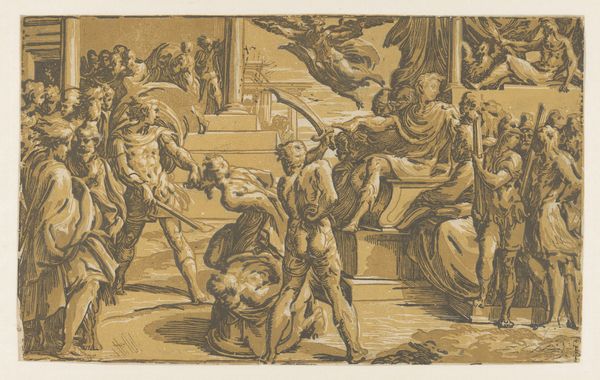
drawing, print, engraving
#
drawing
# print
#
mannerism
#
11_renaissance
#
history-painting
#
engraving
#
male-nude
Dimensions: sheet: 11 3/16 x 14 13/16 in. (28.4 x 37.7 cm)
Copyright: Public Domain
Editor: This engraving, "The Forge of Vulcan" by Cornelis Bos, dates to 1546. It’s teeming with figures, all muscles and motion! The scene feels… industrious, but also a bit chaotic. What do you see in this piece? Curator: Chaos is a fitting word. Beyond the immediately visible action, I see layers of encoded meaning. Look at how Vulcan, often depicted as lame, is nevertheless surrounded by dynamic energy. What might that contrast signify? Editor: Perhaps his creations compensate for his physical limitations? The tools, the armor… they’re extensions of his power? Curator: Precisely! Consider also the presence of Venus, often accompanied by Cupid. Are they merely witnesses, or do they represent something more profound within the context of creation and destruction inherent in Vulcan's forge? Notice how Cupid appears almost fearful. Editor: I see what you mean. There’s a tension there. It’s not simply a celebration of creation; there's a hint of apprehension. Like the consequences of innovation are not fully known. Curator: And isn’t that a potent idea, still relevant centuries later? The god of the forge represents transformation, and the emotional valence tied to technological advancement hasn't really changed. Editor: That's fascinating. It reframes how I see the work – it is more than just a mythological scene; it's about our complicated relationship with progress. Thank you! Curator: My pleasure. Thinking about how symbols accrue meaning over time is central to art history. This piece acts as a vessel carrying this question forward to our time.
Comments
No comments
Be the first to comment and join the conversation on the ultimate creative platform.

